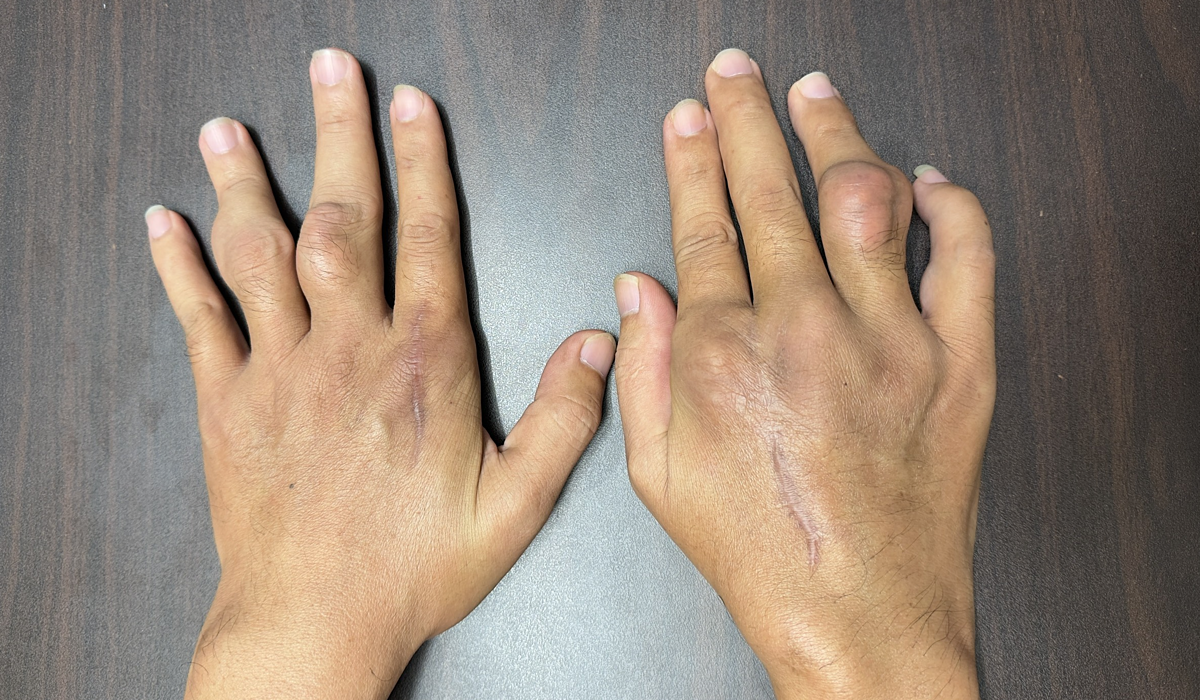Initially, Thanh sought traditional medicine for his supposed sprain, but the swelling and pain worsened. Over-the-counter medication provided temporary relief, but the issue quickly returned. His big toe became inflamed and excruciatingly painful, hindering his ability to walk. At a Ho Chi Minh City hospital, doctors diagnosed him with gout, his uric acid levels far exceeding the normal range.
"I was shocked to learn I'd have to live with this condition so young," Thanh recalls.
Doctor Huynh Phan Phuc Linh, Head of the On-Demand Treatment Department specializing in musculoskeletal disorders at Cho Ray Hospital, confirms a rise in gout cases. While previously common in men over 40, it now affects many in their 20s and 30s.
Statistics from Ho Chi Minh City University of Medicine Hospital show that 50% of gout patients are between 30 and 40, a percentage that's increasing. A 2023 study in the Vietnamese Medical Journal reveals that one-third of hyperuricemia cases (high uric acid levels) are in those under 40, with a 5.2% gout prevalence in this group, half of them being new cases. Men are more affected than women in both categories.
Gout, a joint disease caused by purine metabolism disorder, leads to high uric acid levels and urate crystal deposits in muscles and joints. Modern lifestyles are a primary driver of this trend. Diets high in purine-rich foods like seafood, organ meats, red meat, and processed meats are a significant factor. Excessive alcohol consumption, particularly beer and spirits, also increases purine production and reduces uric acid excretion.
Sugary drinks, obesity, and certain medications (diuretics, aspirin) contribute to the problem. Overuse of protein supplements and rapid, unhealthy weight loss can also disrupt purine metabolism.
Gout typically manifests as sudden, intense joint pain, often in the big toe, but also affecting knees, wrists, or elbows, frequently starting at night or in the early morning. Repeated flare-ups lead to chronic inflammation, and long-term cases develop tophi, causing joint deformity.
"In early stages, patients often self-medicate instead of seeking a diagnosis, only visiting the hospital when the pain becomes severe," Dr. Linh explains.
Treatment involves two phases: managing inflammation with anti-inflammatory drugs like Colchicin, NSAIDs, or corticosteroids if NSAIDs are contraindicated; and using uric acid-lowering medication to maintain safe levels, preventing recurring flare-ups and complications like tophi, kidney stones, or kidney failure.
Currently, experts don't recommend treating asymptomatic hyperuricemia, as uric acid-lowering drugs are unnecessary and offer no benefit in such cases.
"Treating gout is straightforward if patients adhere to prescribed medication and avoid self-medicating," Dr. Linh emphasizes. This prevents complications from incorrect drug use, corticosteroid overuse, stomach issues, or even gastric bleeding from NSAIDs.
 |
A young patient with joint deformity caused by gout. Photo courtesy of the doctor. |
A young patient with joint deformity caused by gout. Photo courtesy of the doctor.
Dr. Linh recommends regular check-ups for young people, especially those with a family history of gout or unhealthy lifestyles. Early detection improves disease management and prevents long-term damage.
Prevention involves reducing purine-rich foods, limiting alcohol, staying hydrated, maintaining a healthy weight, exercising, and avoiding self-medicating for joint pain.
Prompt medical attention is crucial at the first sign of joint inflammation. After diagnosis, consistent uric acid-lowering medication, lifestyle changes, a proper diet, and weight management are essential for effective disease control.
After 8 years with a condition once considered an "old person's" or "rich person's" disease, Thanh now manages his gout well. Initial negligence and missed appointments led to severe flare-ups, sometimes waking him in agony, desperate for morning to seek medical help. Once a heavy drinker and eater, he now avoids organ meats and seafood, his former favorites, and attends regular check-ups.
"I still remember the pain after those parties with alcohol. Thanks to consistent treatment, I've avoided severe flare-ups even when I've had to drink on unavoidable occasions," he shares.
Le Phuong












